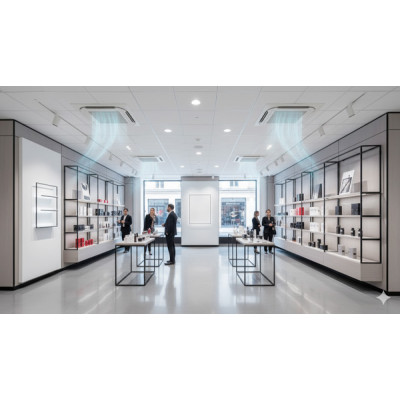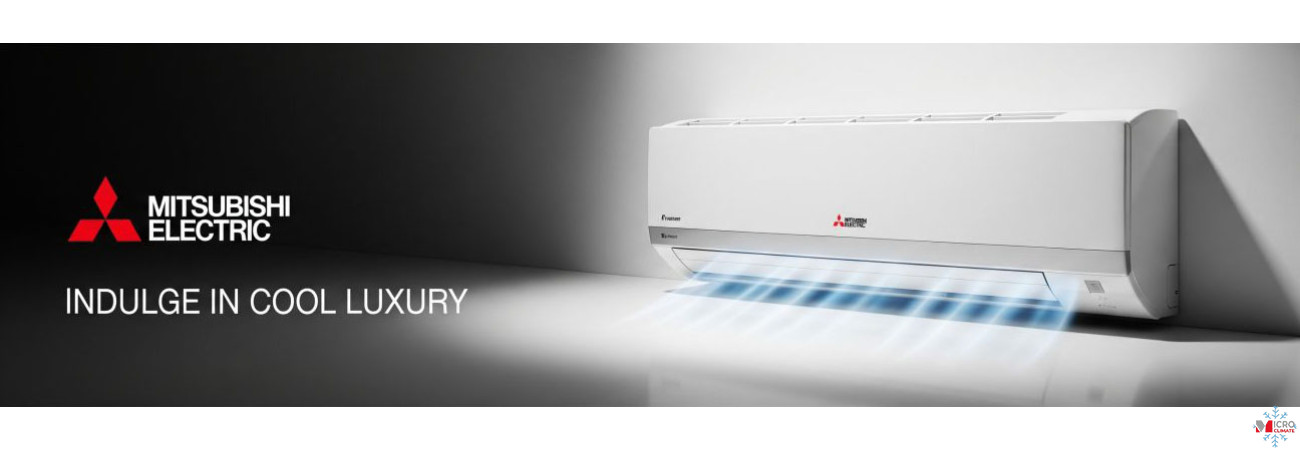
Retail environments in London face unique HVAC challenges: limited installation space, long operating hours, and fluctuating foot traffic. Choosing the right air conditioning system ensures optimal comfort for customers and staff while maintaining energy efficiency and noise compliance.
1. Wall-Mounted Split Systems
Best for small boutiques or cafés up to 40 m².
They offer quick installation, low cost, and efficient temperature control.
Modern inverter models (Daikin Sensira, GREE Fairy, Cooper & Hunter Alpha) achieve A++ ratings with SEER around 7.0–8.0 and SCOP 4.2–4.8.
However, they are less suitable for large open areas.
2. Ceiling Cassette Units
Ideal for medium-sized shops (50–150 m²) with suspended ceilings.
They provide 360-degree airflow, ensuring even cooling across open sales areas.
Popular choices include Mitsubishi Electric PLA-ZM, Daikin SkyAir, and GREE Cassette Pro.
Noise levels as low as 26 dB(A) and built-in drain pumps (850 mm lift) simplify maintenance.
3. Multi-Split Systems
For stores divided into sections (fitting rooms, offices, stock rooms), multi-split systems connect multiple indoor units to one outdoor unit, reducing façade clutter.
Energy savings of 30 % over independent splits and easier zoning control make them highly suitable for London’s narrow storefronts.
4. Ducted Air Conditioning
When aesthetics matter, ducted systems hide all components within ceilings or walls, delivering air through discreet vents.
They offer silent operation (as low as 20 dB(A) indoors) and balanced air distribution, but require higher installation complexity and ceiling space.
5. VRF/VRV Systems
For large retail chains or multi-floor stores, VRF systems provide scalable multi-zone control and energy recovery.
Capacities range from 8 HP to 150 HP, supporting up to 64 indoor units.
Brands like Daikin, Toshiba, and Midea offer heat recovery options for simultaneous heating and cooling between departments.
6. Portable and Temporary Units
For pop-up shops or temporary kiosks, portable AC units (2–3 kW) are cost-effective and mobile.
However, they are less efficient and noisier — suitable only as short-term solutions.
Energy Efficiency Considerations
London’s retail premises must comply with Part L Building Regulations.
Inverter-driven units using R32 refrigerant lower CO₂ emissions and running costs.
Opt for systems with SEER > 7.0 and programmable timers to meet both comfort and sustainability targets.
Maintenance and Service
Annual maintenance ensures efficiency and hygiene.
Filter cleaning every three months and coil inspection twice per year are recommended.
Most modern systems include self-diagnosis and leak detection features for easier upkeep.
Conclusion
The ideal air conditioning system for a London shop depends on size, layout, and operating hours.
Ceiling cassette and multi-split systems offer the best balance of comfort, aesthetics, and energy efficiency for most retail spaces.
By selecting modern inverter-driven models with smart control, shop owners can ensure consistent comfort, compliance, and reduced operating costs year-round.







